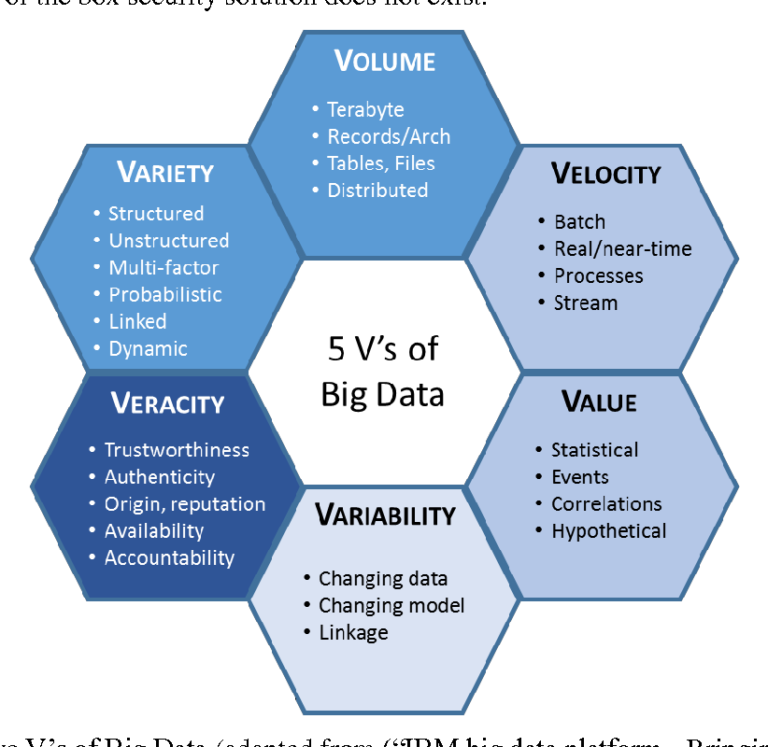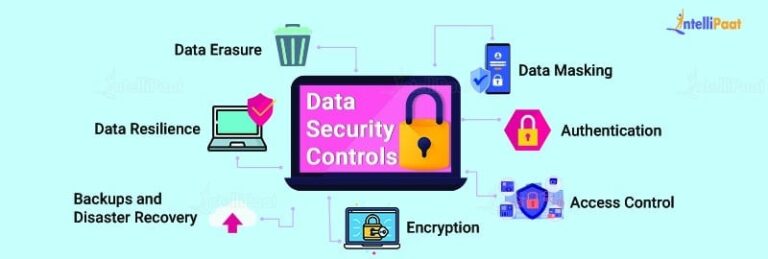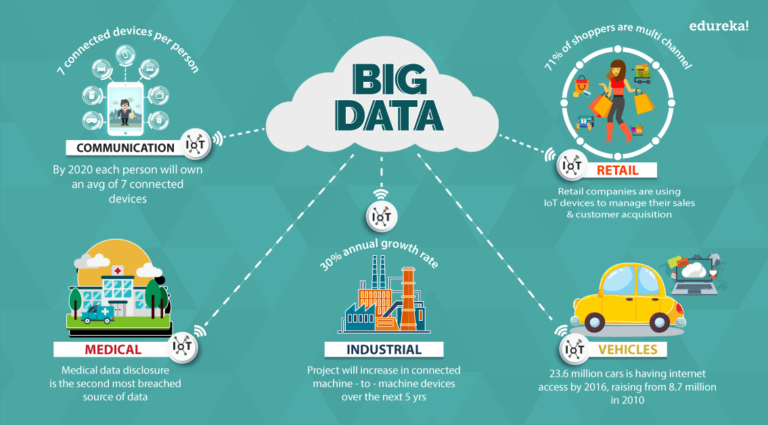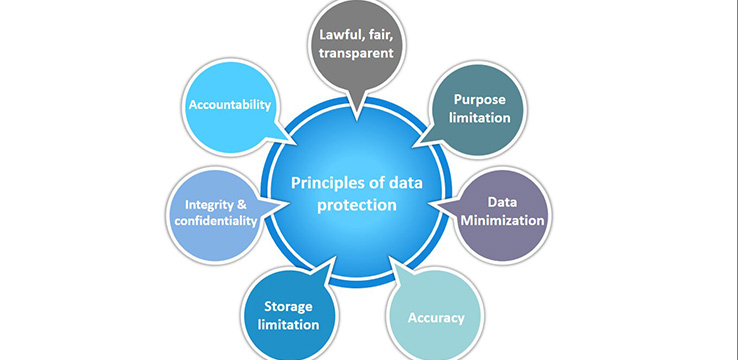What Is The Source Of Big Data?
Big Data is a term used to describe large and complex datasets that cannot be processed with traditional data processing tools. It is generated from a variety of sources, including data generated by sensors, social media, and other digital sources. Big Data is used to identify trends, predict customer behavior, and create better products and services. It also helps to uncover valuable insights about customers, products, and operations. Big Data has enabled businesses to gain a deeper understanding of their customers, competitors, and markets. It has also allowed organizations to make more informed business decisions and improve operational efficiency.
Definition of Big Data
Big Data is a term used to describe the large and complex sets of data that are too large and/or complex to be processed and analyzed using traditional data processing techniques. It is often characterized by its size, velocity, veracity, and variety. Big Data can be used to identify patterns and correlations and to predict future trends. It can also be used to gain insights into customer behavior, product performance, and market trends. The power of Big Data lies in its ability to give organizations the ability to quickly identify and respond to opportunities and threats in their environment.
Types of Big Data Sources
Big Data is a phrase used to describe the large volume of data sets that can be analyzed to reveal patterns, trends, and associations, especially relating to human behavior and interactions. Data sources for Big Data can be divided into two main categories: structured and unstructured. Structured data is organized and stored in a relational database, and typically comes from transactional systems like customer relationship management (CRM) or enterprise resource planning (ERP) systems. Unstructured data is not organized and is not stored in a conventional database. It is often unstructured text, images, audio, and video that can be found in social media, blogs, or web pages. By analyzing both structured and unstructured data, organizations can gain valuable insights into customer behavior and other trends.
Benefits of Big Data Sources
The world of data is constantly evolving, and with the advent of big data sources, businesses are now able to access unprecedented amounts of data. From the ability to gain insights into customer behavior to optimizing operational processes, the benefits of big data are numerous and far-reaching. By leveraging big data sources, businesses can gain accurate and up-to-date insights into customer preferences, develop more efficient processes, inform better decisions, and improve customer service. Additionally, big data sources can be used to identify trends and patterns in customer behavior, helping companies understand customer needs and develop tailored solutions. All of these advantages can help businesses stay ahead of the competition, drive innovation, and improve profitability. In short, big data sources are a powerful tool for businesses looking to take advantage of the ever-increasing data-driven world.
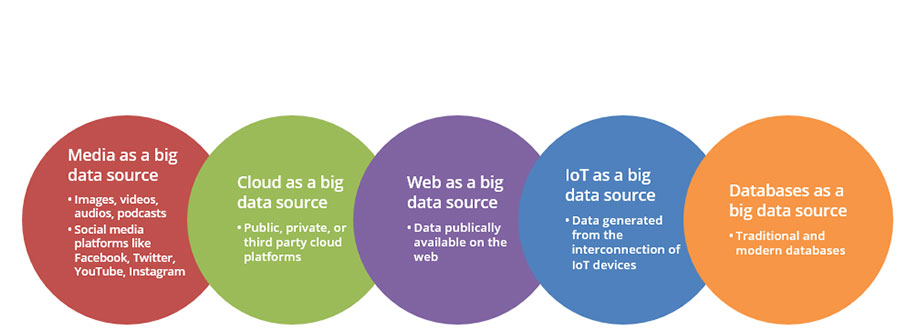
Challenges of Big Data Sources
Big data is a term used to describe the vast amount of data that is collected from different sources, including social media, internet searches, and other sources. As data continues to grow, it presents both a challenge and an opportunity for businesses, organizations, and individuals to gain insights from it. The challenge of big data sources is the sheer volume of data that can be difficult to manage and analyze. Additionally, big data can be unstructured and difficult to interpret accurately without the right tools and techniques. Furthermore, security and privacy concerns can arise when handling large amounts of data. Therefore, it is important to understand the challenges of big data and how to properly manage it in order to make the most of the data available.
Big Data Analytics
Big Data Analytics is the process of collecting, organizing, and analyzing large amounts of data to uncover hidden patterns, correlations, and other insights. By leveraging powerful analytics tools and techniques, businesses can identify opportunities for growth, improve customer experience, and optimize operations. Big Data Analytics can help organizations gain valuable insights from their data, enabling them to make better decisions, uncover new possibilities, and create value. With the right tools, companies can gain insights into customer behavior, market trends, operational performance, and more. Big Data Analytics is transforming the way businesses operate and is becoming increasingly important in today’s competitive marketplace.
Big Data Use Cases
Big Data Use Cases refers to the application of big data to solve complex problems. This type of analysis is used in a wide variety of industries, from health care to finance. Big Data Use Cases can help organizations make more informed decisions, improve customer experience, and increase efficiency. The possibilities are endless, and organizations are only just beginning to scratch the surface of the potential of Big Data Use Cases. Big Data Use Cases can help organizations sift through massive amounts of data and gain valuable insights, such as uncovering trends in customer behavior or uncovering hidden patterns in raw data. By leveraging Big Data Use Cases, organizations can gain valuable insights to better understand their customers and make better decisions.
FAQs About the What Is The Source Of Big Data?
Q1. What is the most common source of big data?
A1. The most common sources of big data are web-based data sources, such as social media, online news, and e-commerce sites. Other sources include sensors, internet of Things (IoT) devices, and clickstream data.
Q2. What types of data can be used as a source of big data?
A2. A variety of data types can be used as a source of big data, including structured and unstructured data, text, audio, video, weblogs, images, and other forms of machine data.
Q3. How can companies use big data from different sources?
A3. Companies can use big data from different sources to gain insights into customer trends, build predictive models, identify new opportunities, and optimize operations. Big data can also help businesses develop more effective marketing strategies and better understand customer preferences.
Conclusion
Big data is a growing field that has the potential to revolutionize the way businesses and individuals interact with data. Big data is a collection of large data sets that are too large to be processed with traditional methods. It is generated from sources such as online transactions, social media, and other internet sources. Big data is used to identify trends, patterns, and correlations, as well as to predict outcomes and optimize decisions. By using big data, businesses can improve customer service, increase product efficiency, and make better decisions. Big data can be a powerful tool to help businesses and individuals gain a competitive edge.

